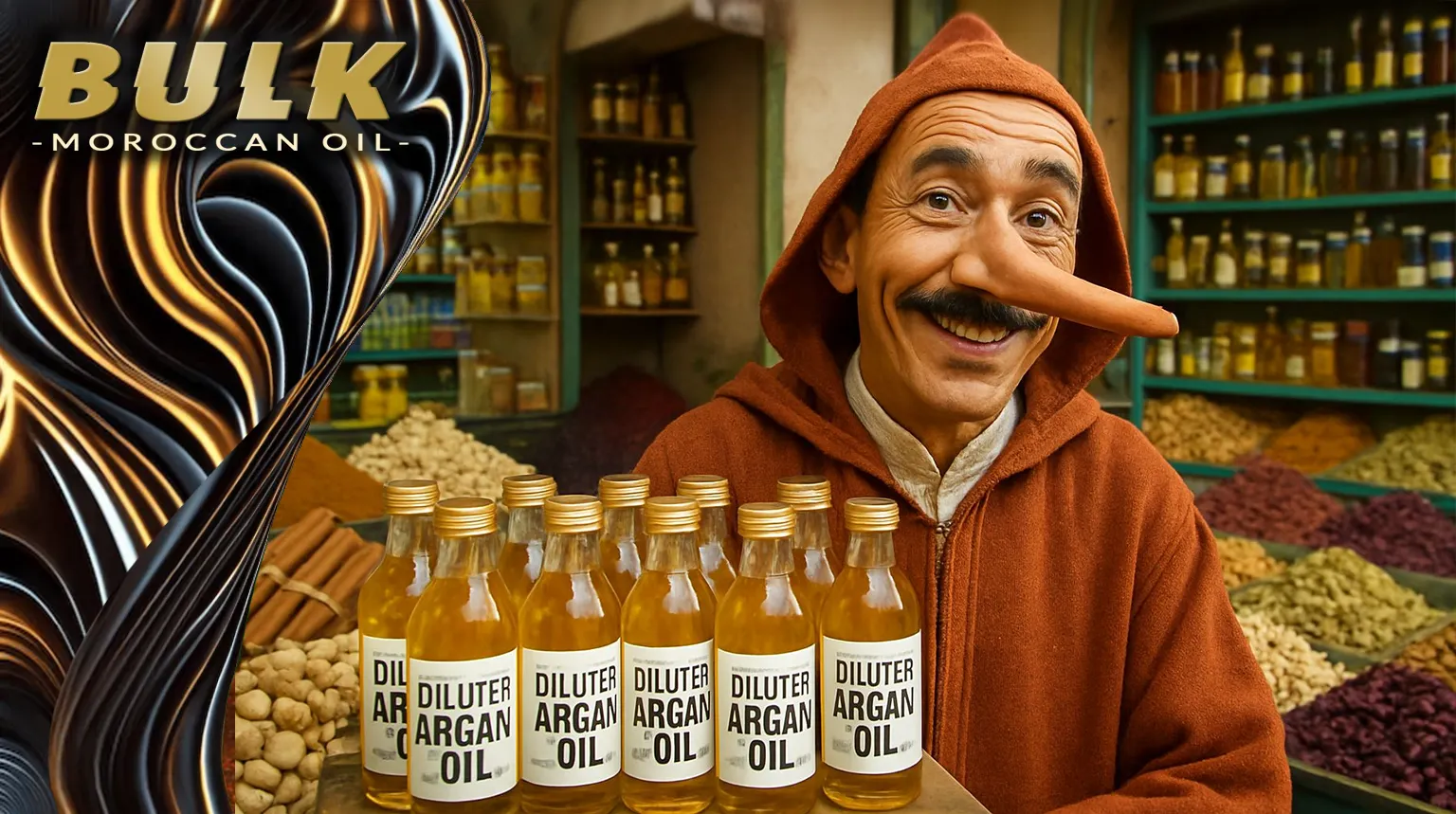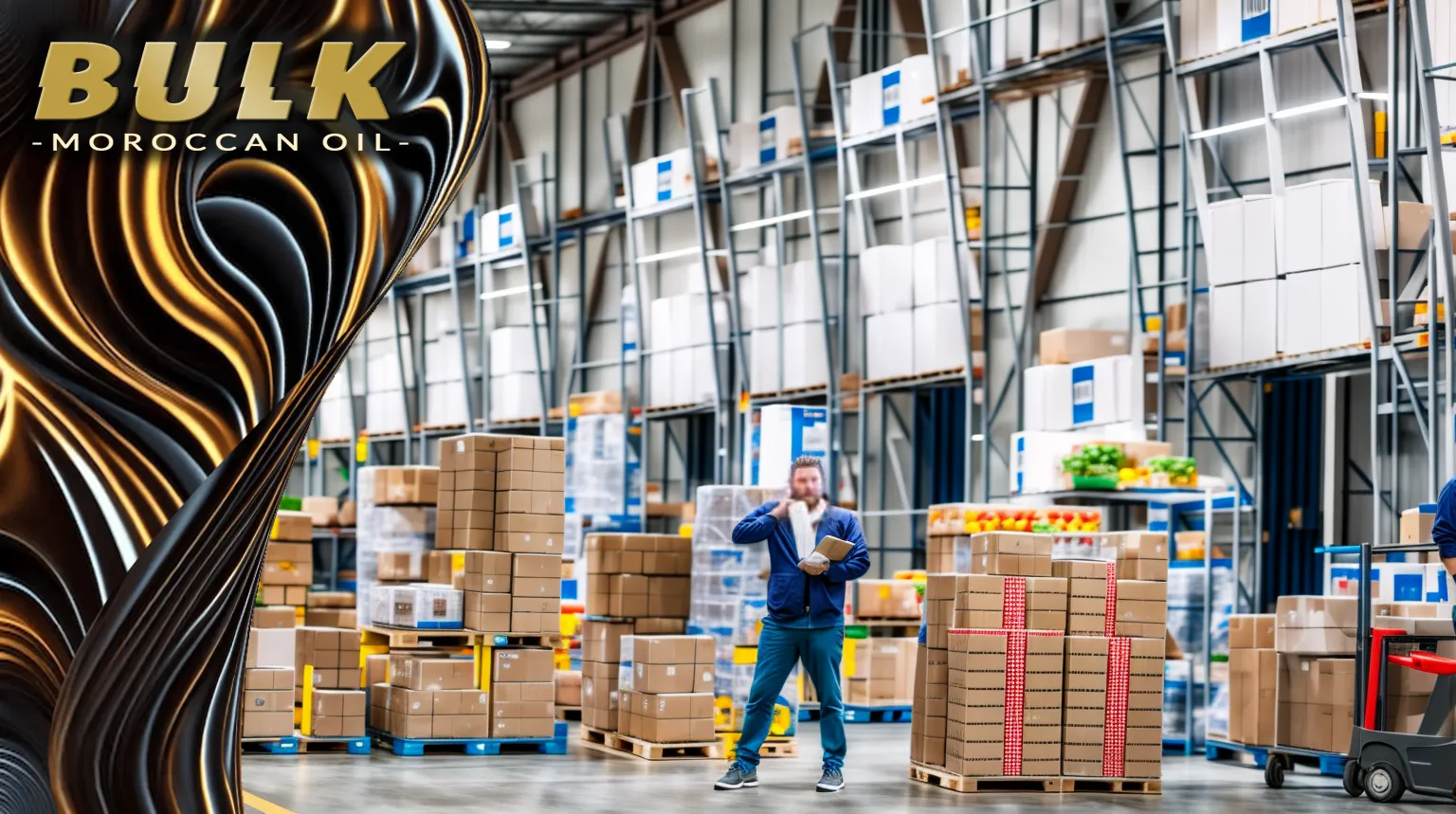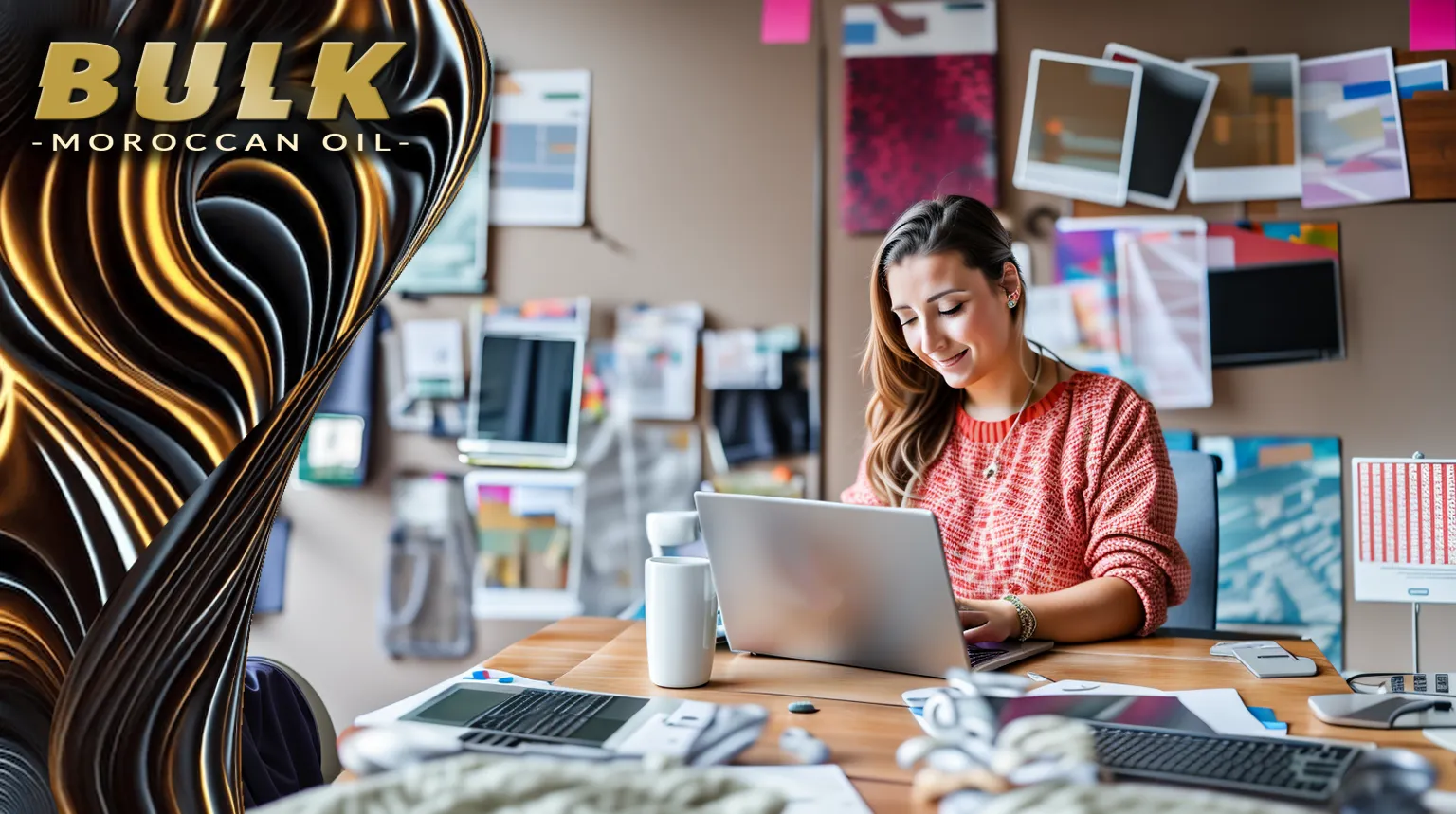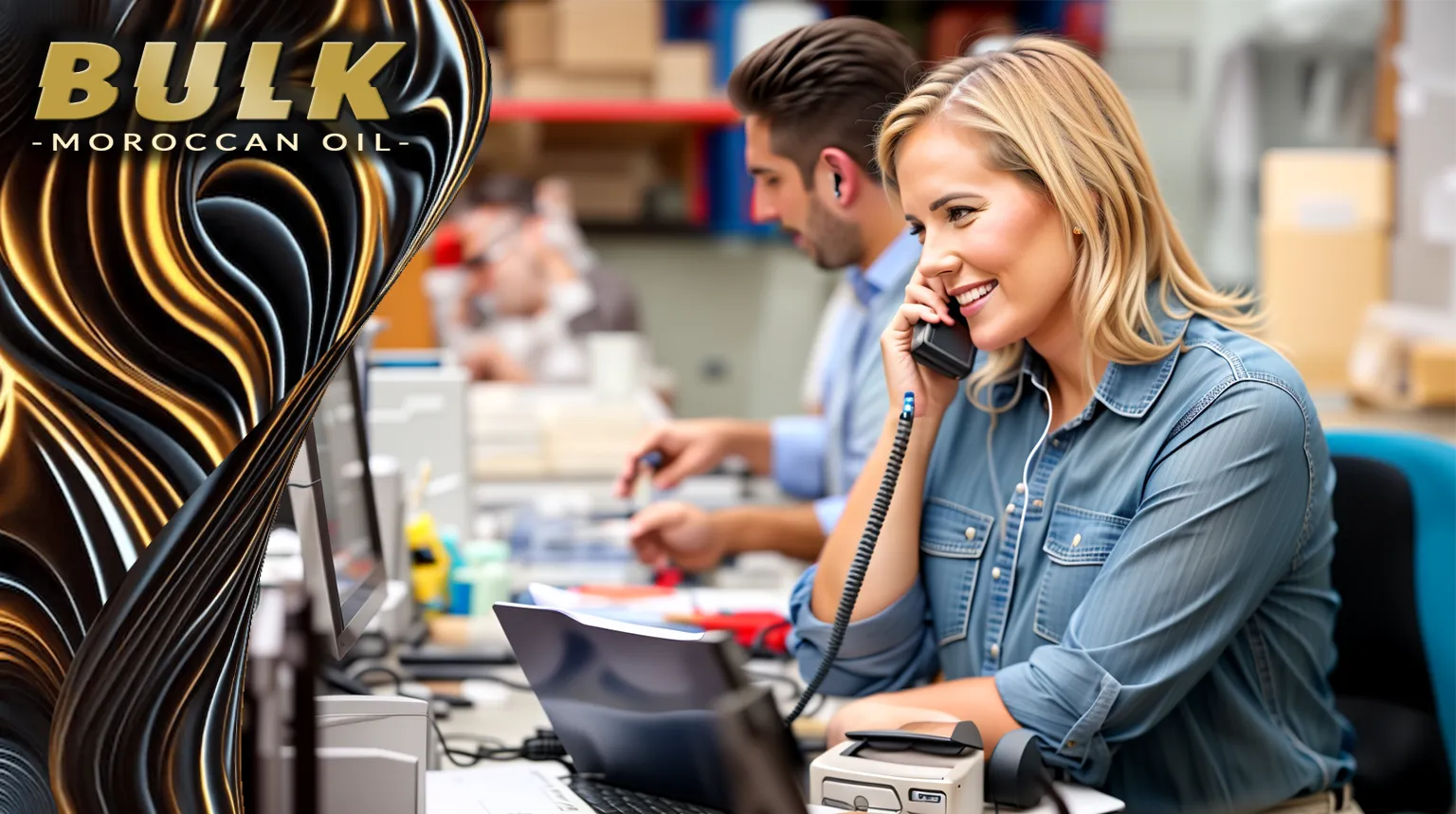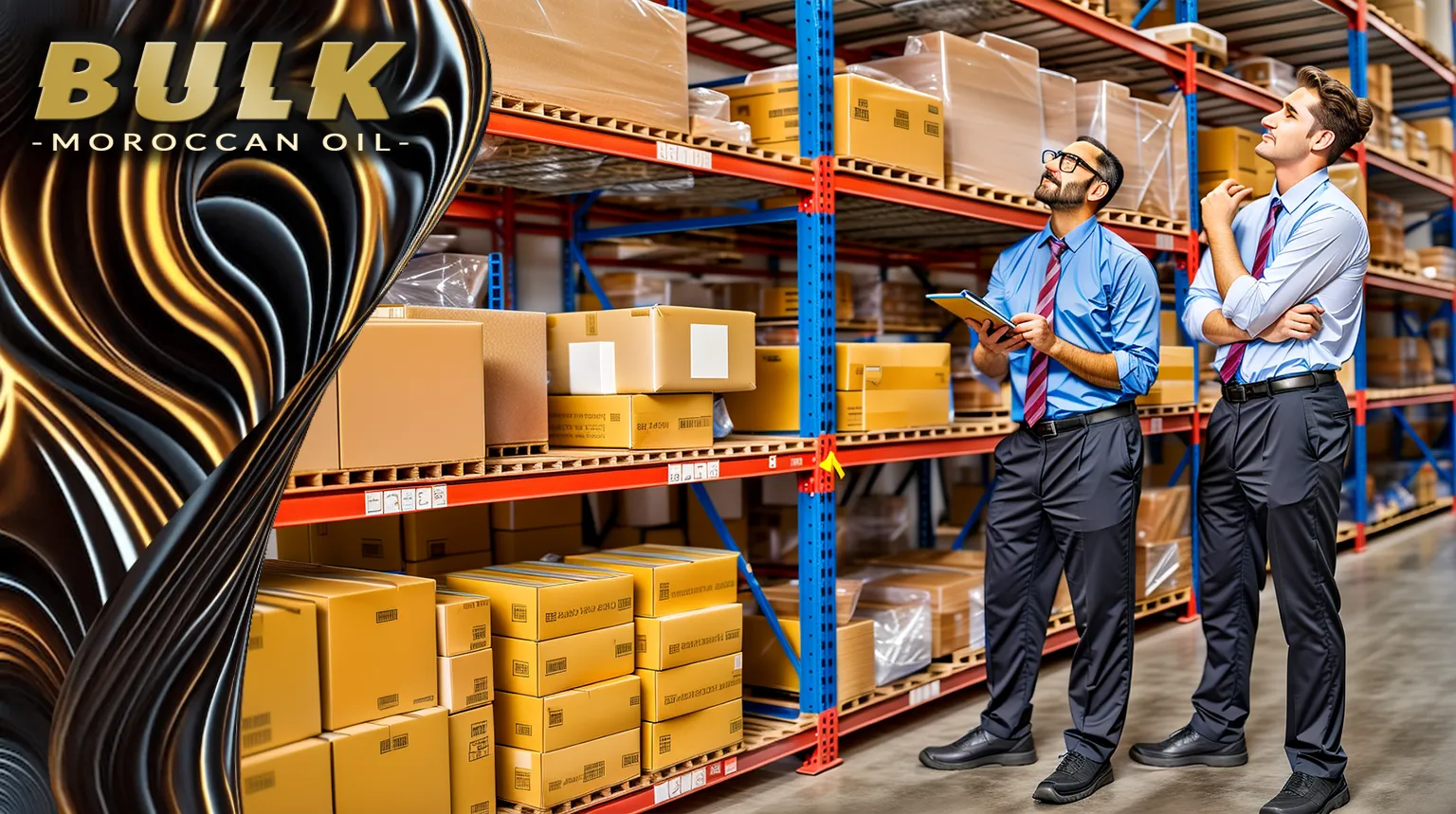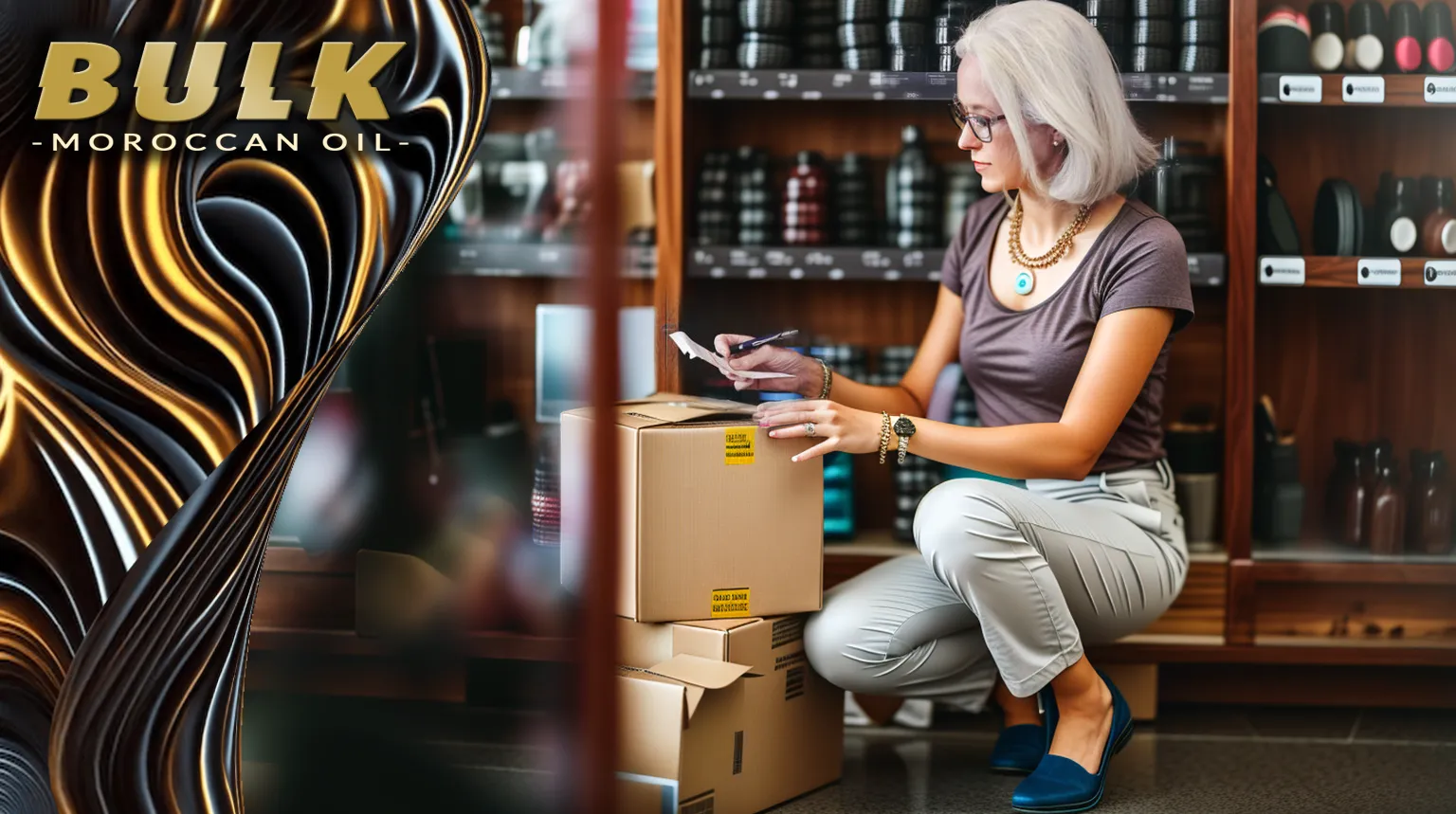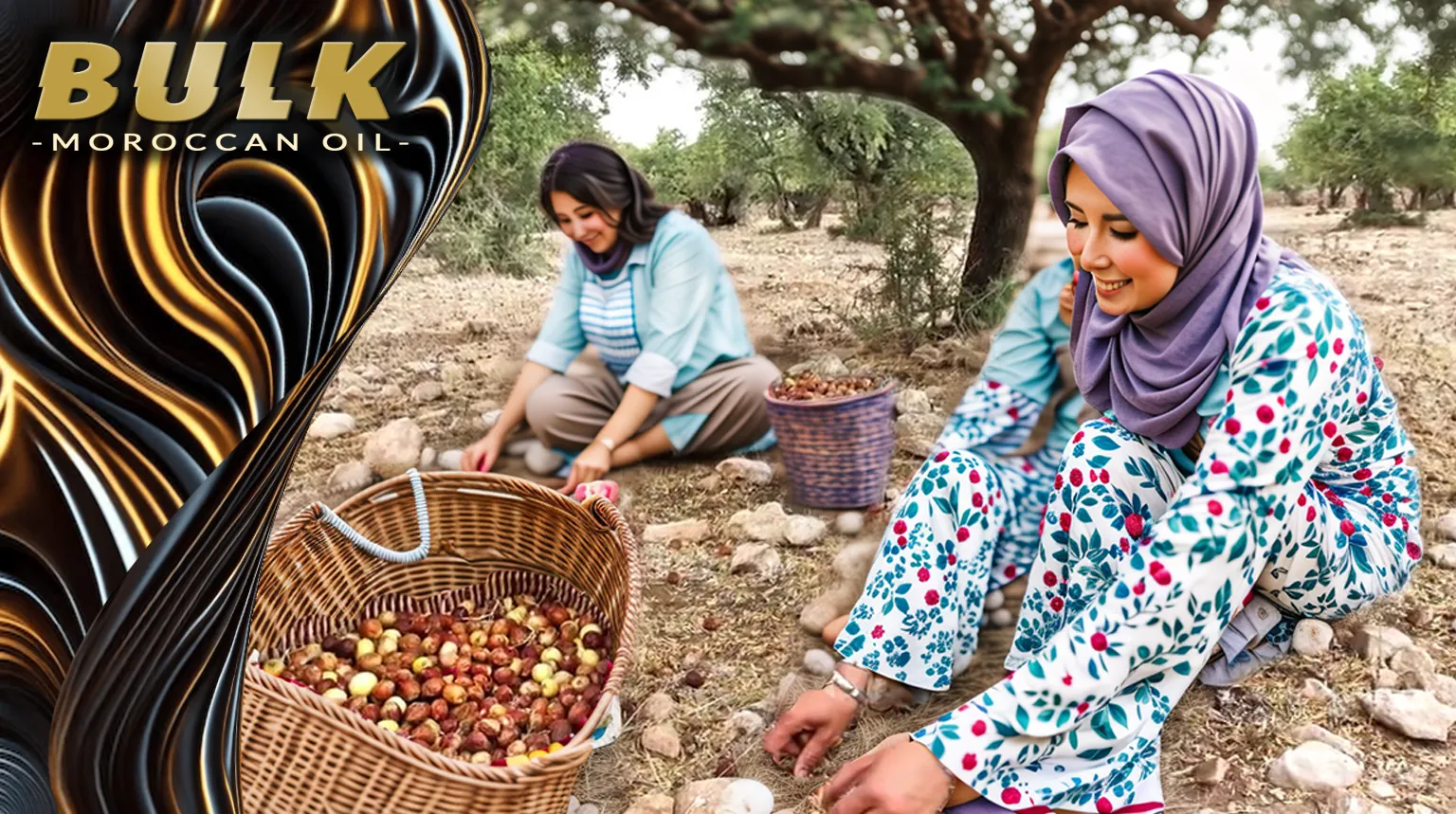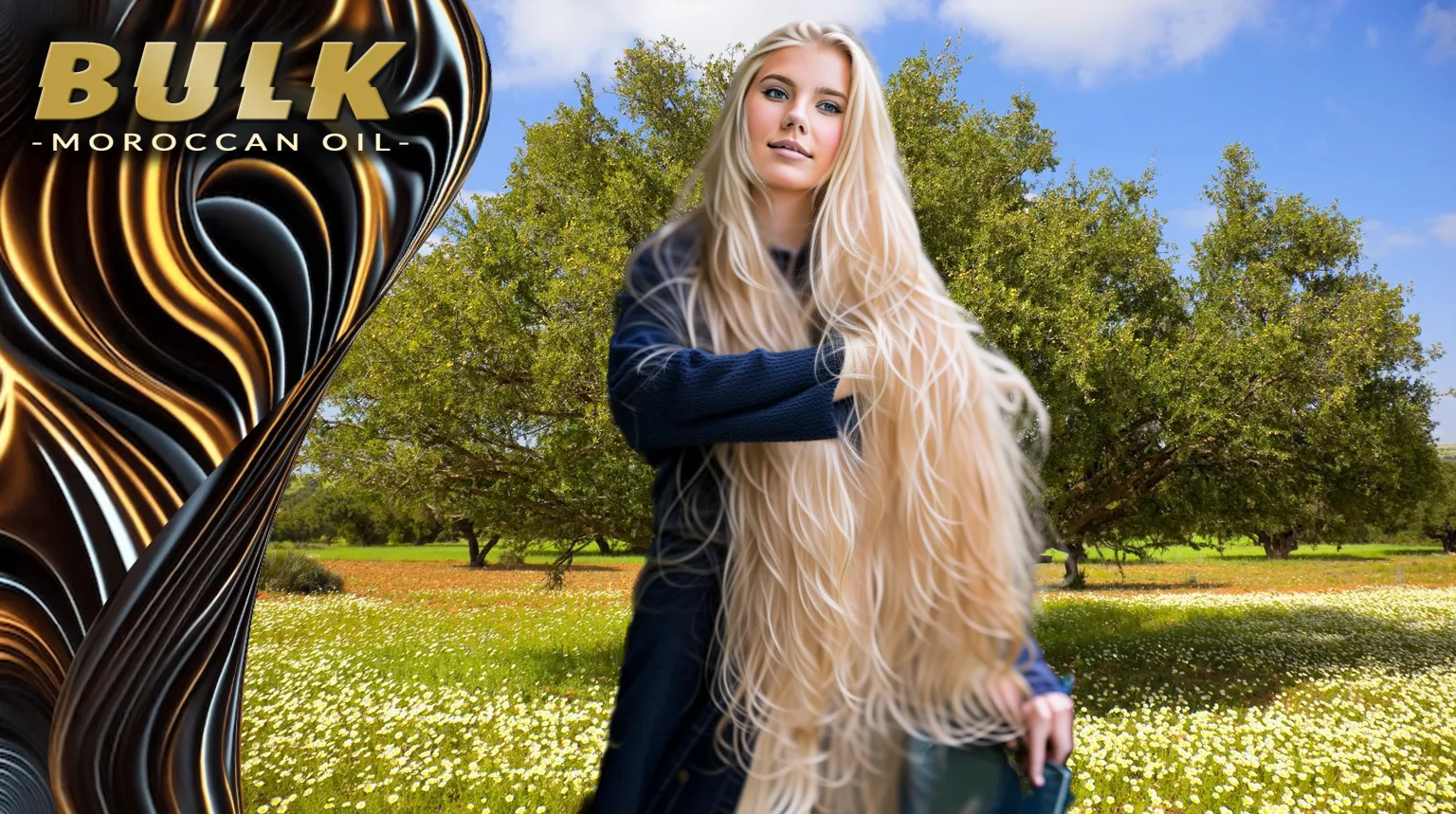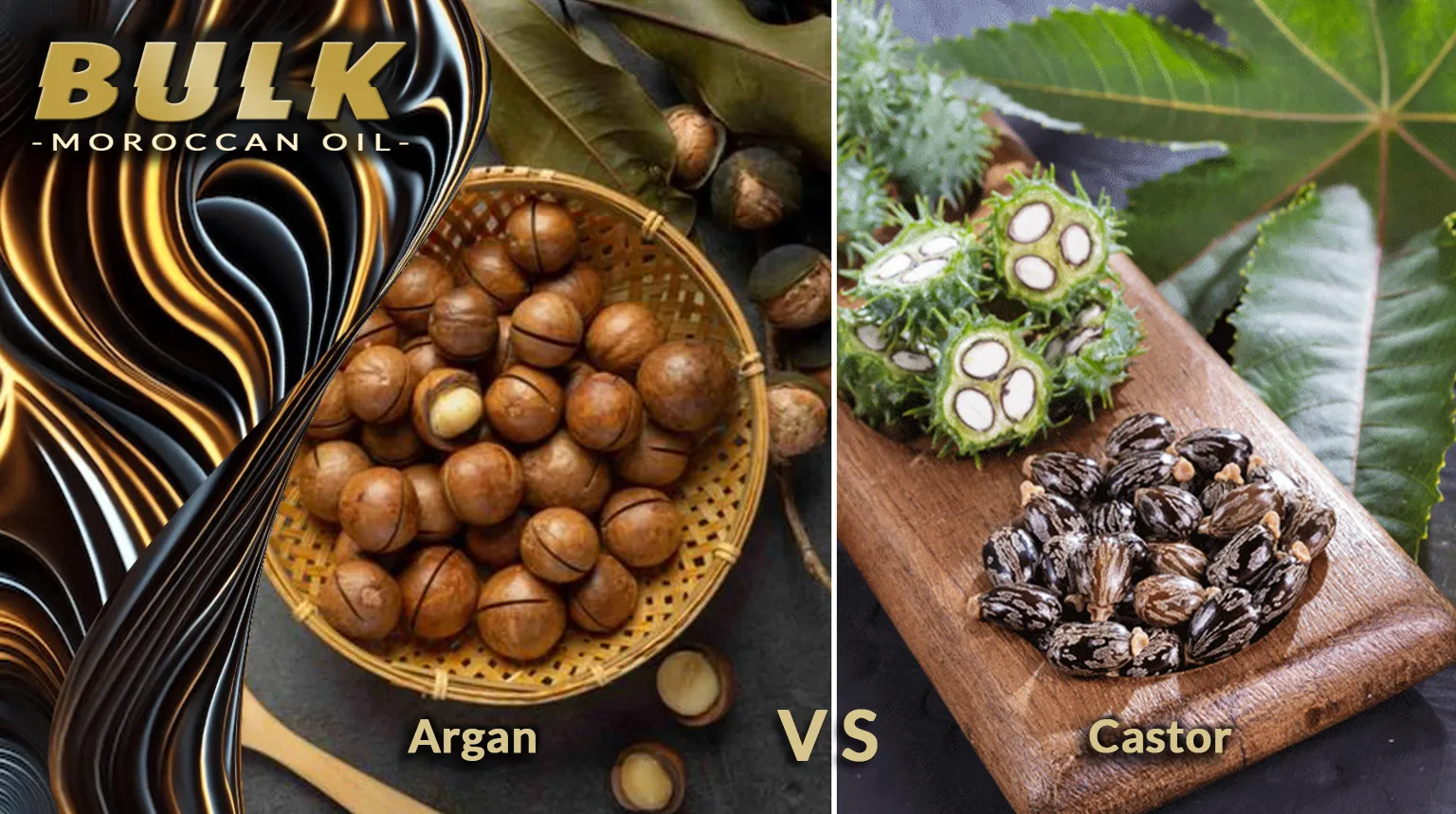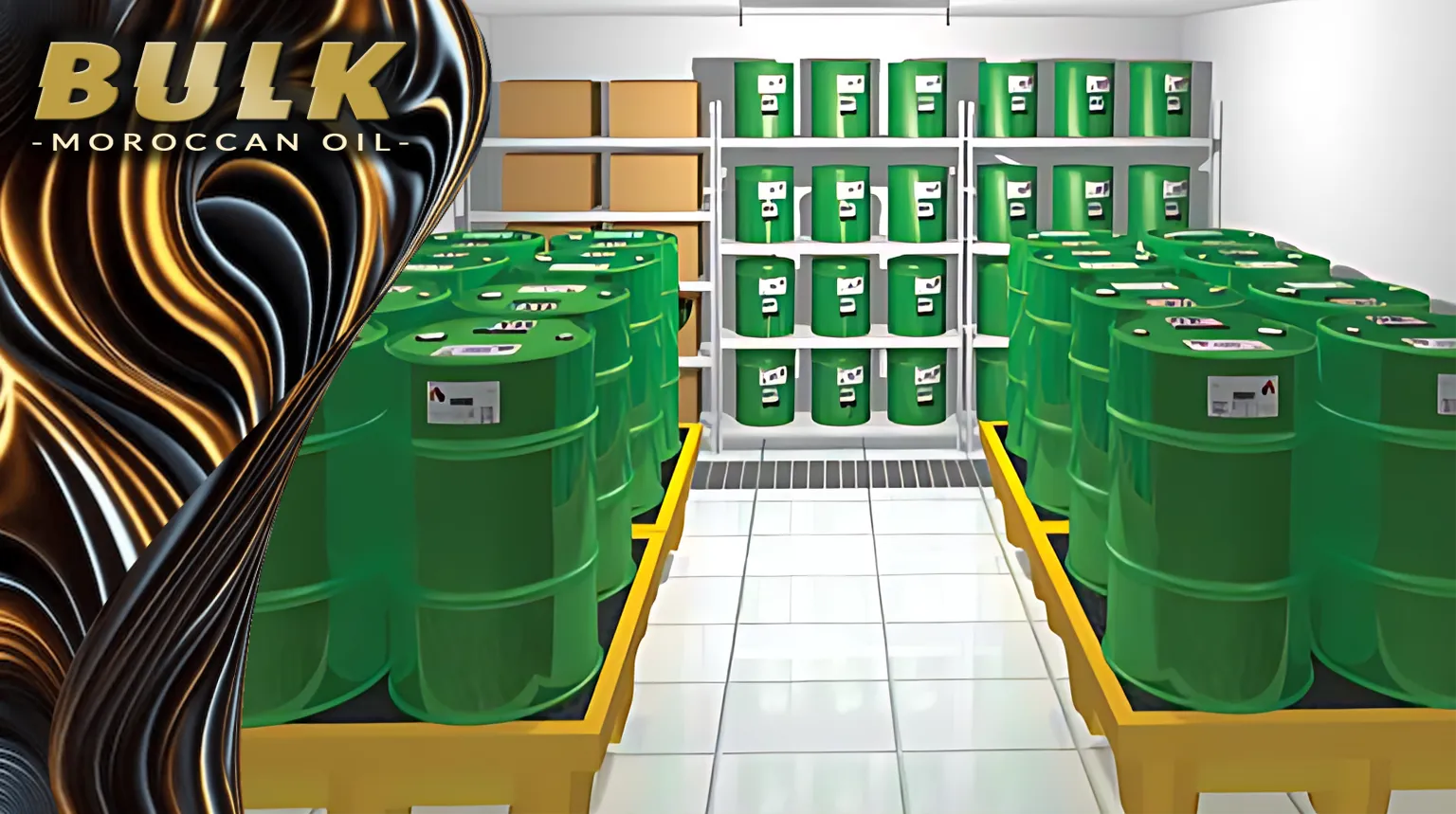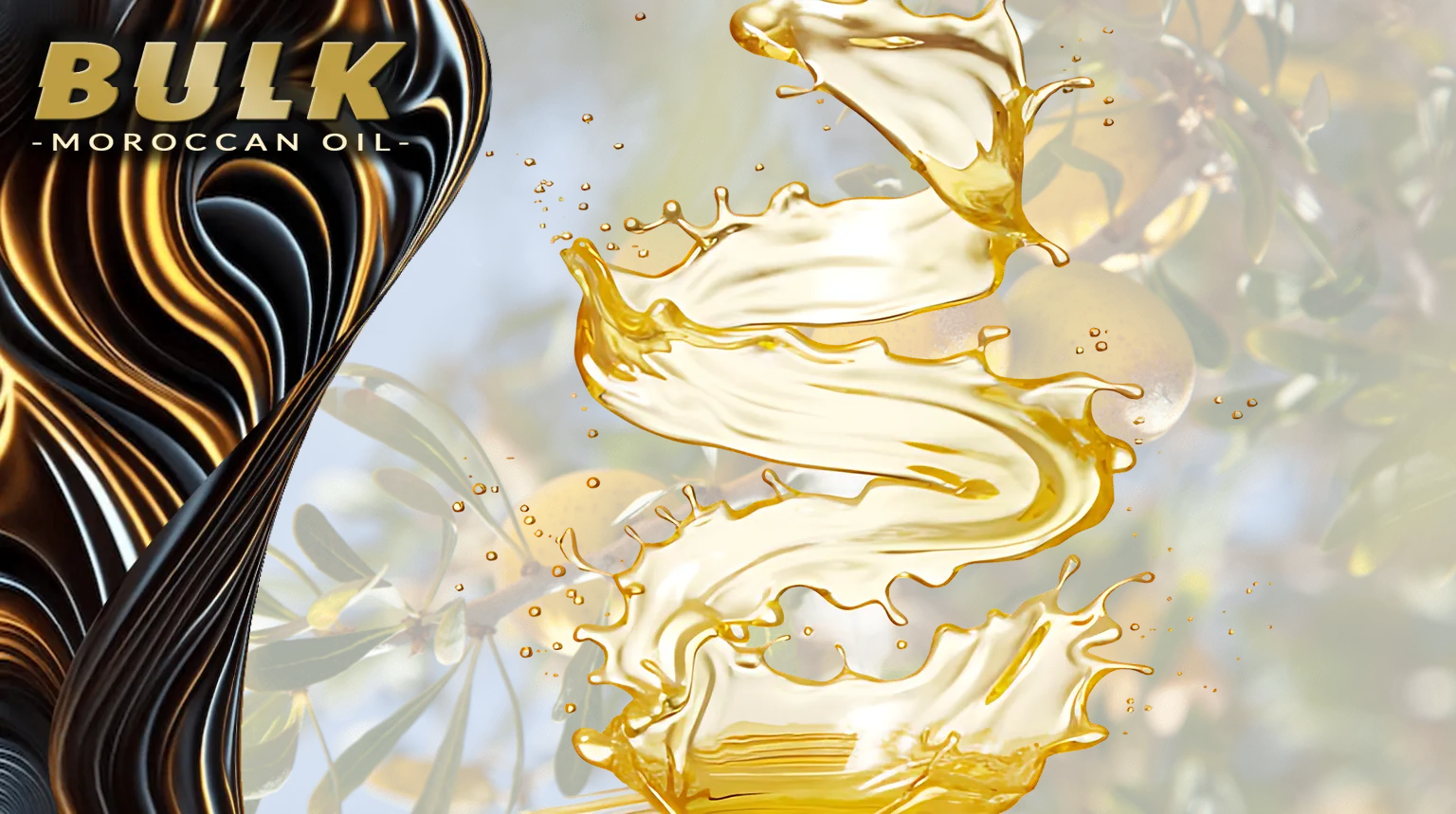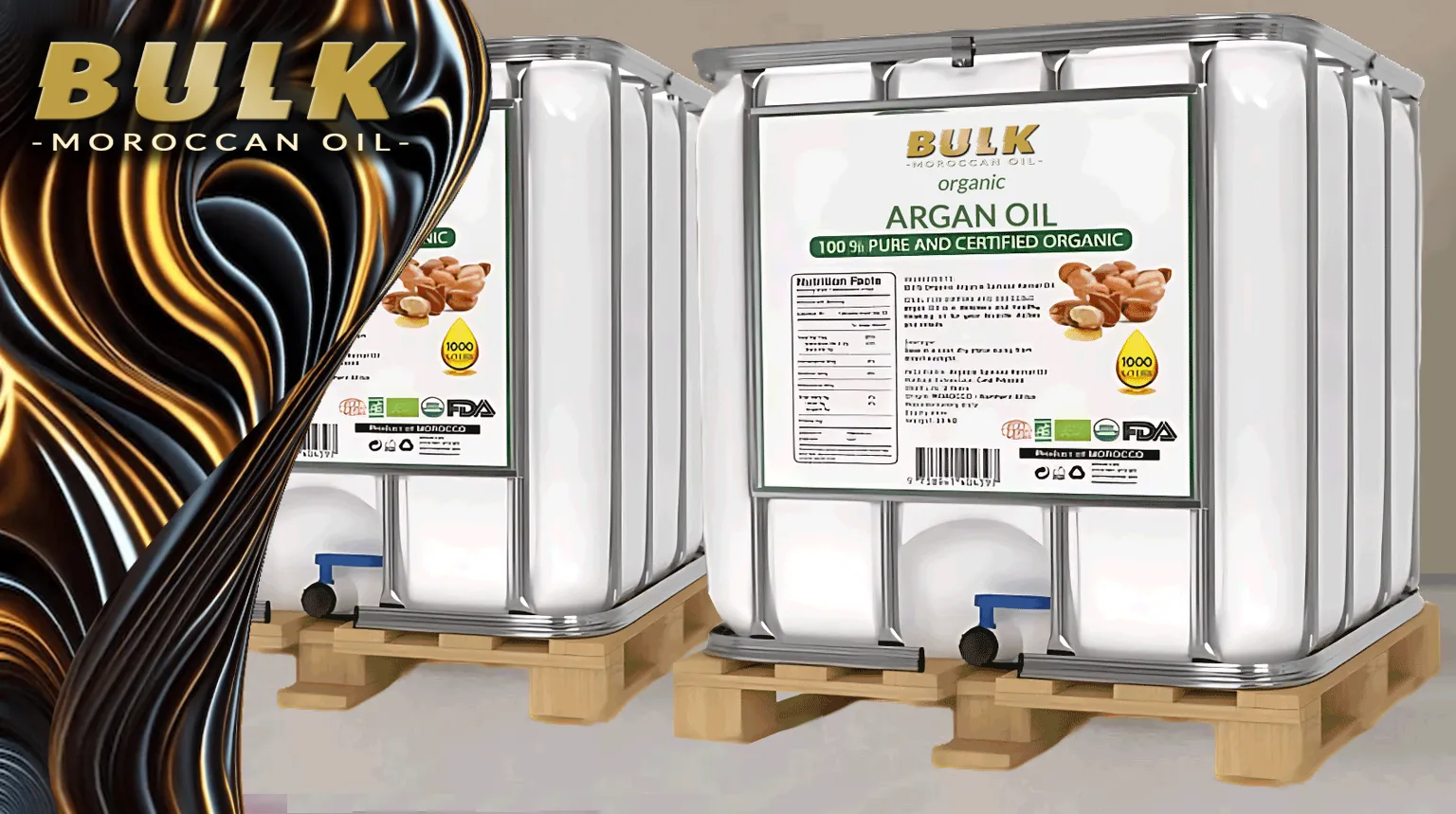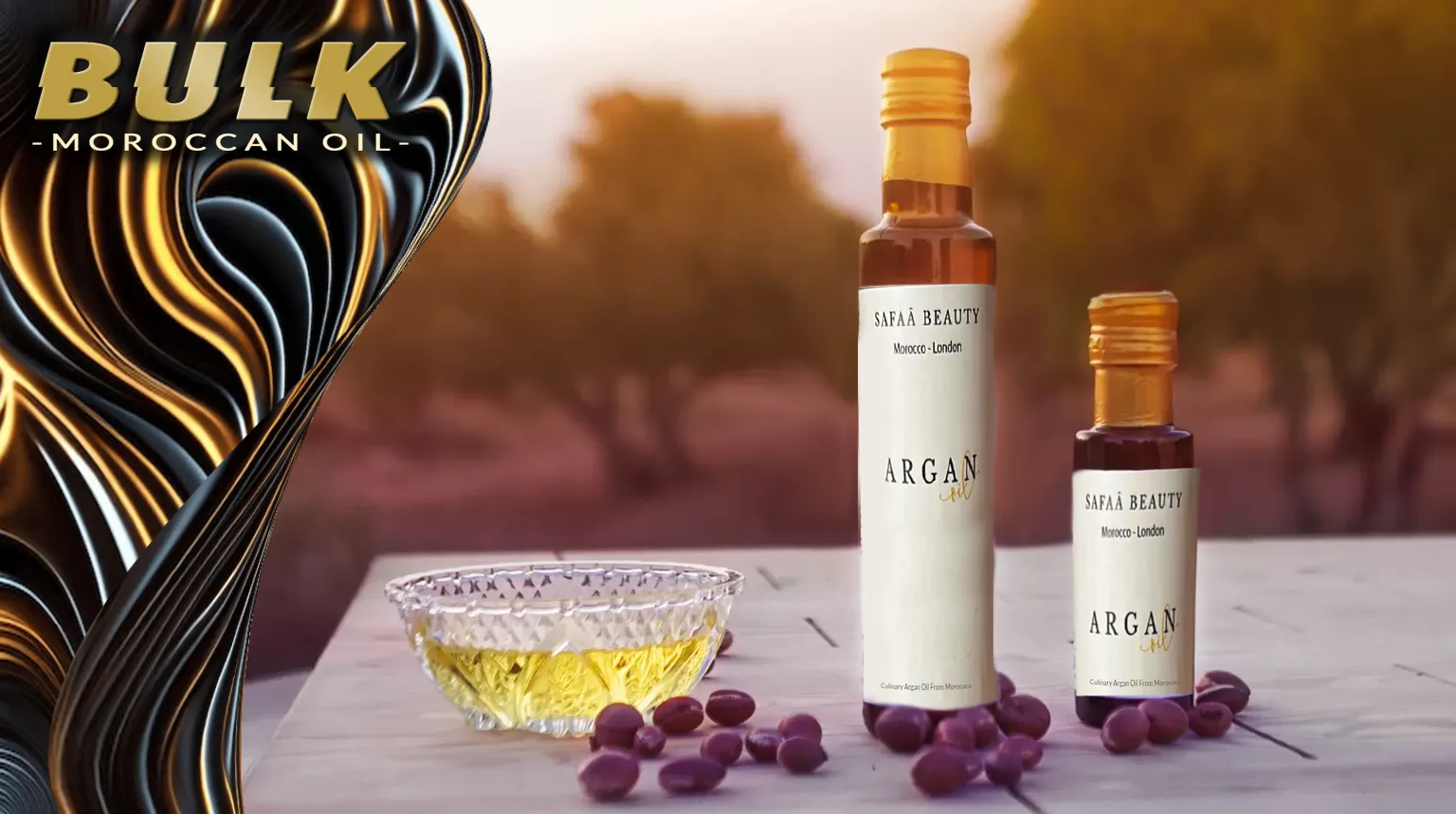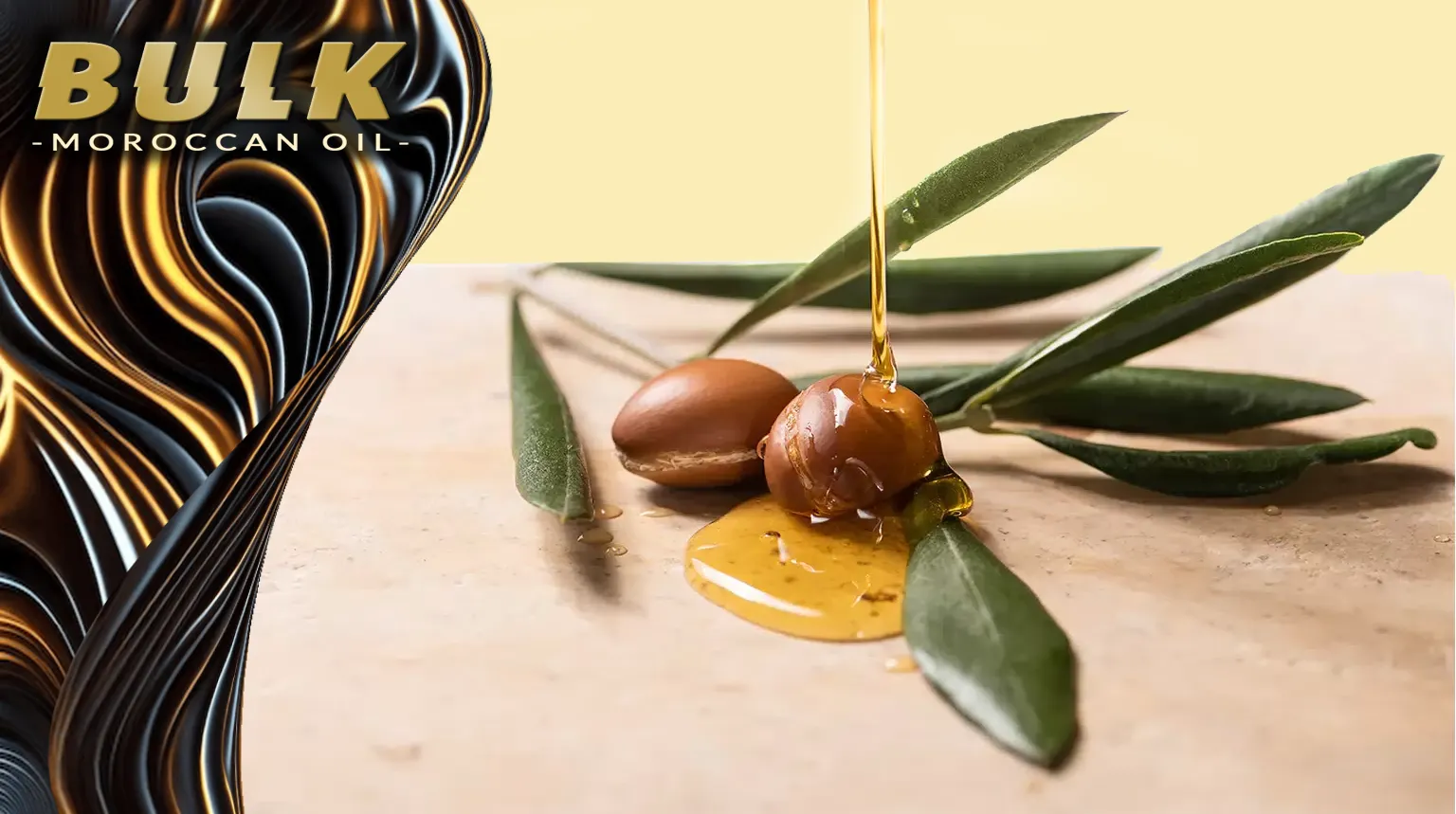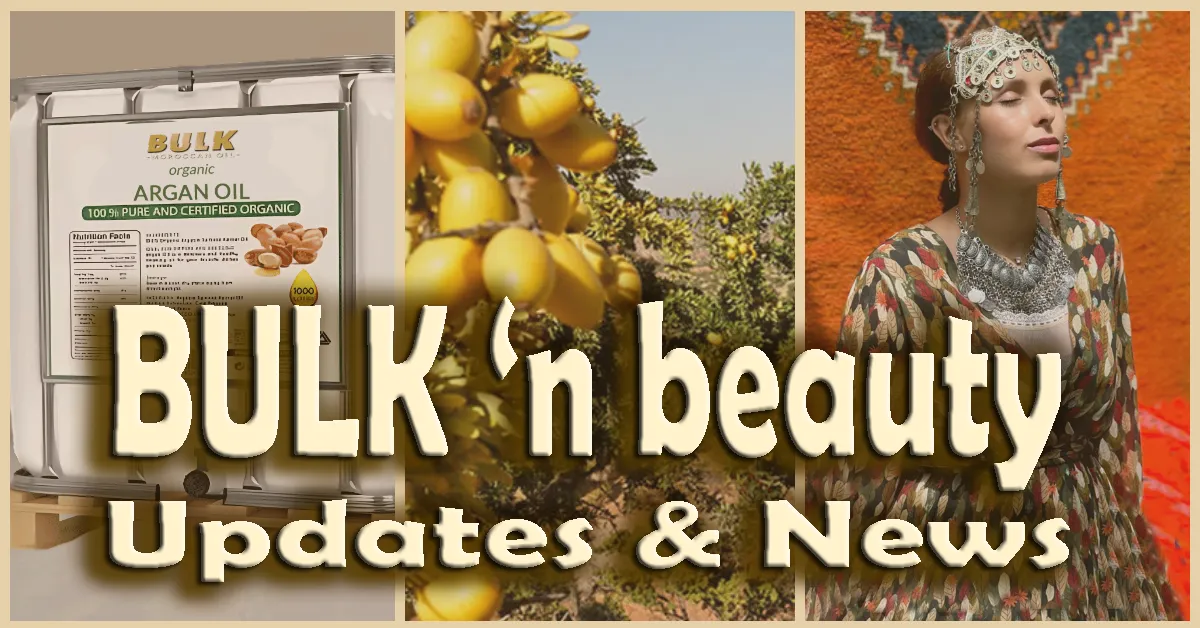The Journey From Kernel to Pure Organic Moroccan Argan Oil
Embark on a mesmerizing journey into the heart of Morocco's beauty secrets with "From Tree to Bottle: The Captivating Journey of Wholesale Argan Oil." This comprehensive exploration unravels the intricate process that transforms the resilient Argan tree's bounty into the highly coveted wholesale Argan oil. Join us as we traverse each stage, from the meticulous harvesting by skilled local women to the artistry of extraction and the careful packaging that preserves this liquid gold's purity.
Content List
1. Harvesting:
- The Essence of the Argan Tree:
- Handpicked Perfection:
2. Fruit Processing:
- Drying under the Moroccan Sun:
- The Art of Kernel Extraction:
3. Oil Extraction:
- Preserving Richness through Cold-Pressing:
- Balancing Act - Solvent Extraction:
4. Clarification and Filtration:
- Purity Unveiled:
- Through the Mesh of Perfection:
5. Packaging and Storage:
- Preserving Liquid Gold:
This blog is brought to you by BULK Moroccan Oil; Argan Oil Wholesale, your supplier for bulk Argan oil products.

Discover the captivating journey of wholesale Argan oil, a Moroccan treasure derived from the kernels of the Argan tree, scientifically known as Argania Spinosa. In this article, we'll take you through the meticulous process that transforms the humble Argan fruit into the highly sought-after wholesale Argan oil. Each step contributes to creating a product that transcends beauty and wellness, from harvesting to oil extraction and packaging to storage. Join us on this enlightening voyage as we uncover the secrets of this precious oil. The journey begins with the harvesting of the Argan fruit by skilled local women who have mastered the art of extracting the kernels from the tough outer shell. The kernels are then carefully hand-cracked to retrieve the precious seeds that hold the key to the oil's nourishing properties.
Once the fleshy kernels are collected, they undergo a meticulous process of cold-press extraction using traditional methods passed down through generations. This ensures that the oil retains its natural qualities and potent benefits without any chemical interference.
The extracted oil is then filtered and refined to remove any impurities, resulting in a pure and golden liquid rich in essential fatty acids, antioxidants, and vitamin E. This makes it a highly sought-after ingredient in the beauty and wellness industry, prized for its ability to nourish, hydrate, and rejuvenate the skin, hair, and nails.
After extraction, the wholesale Argan oil is carefully packaged to preserve its freshness and potency. It is then stored in a controlled environment to maintain quality until it reaches its final destination.
The journey from kernel to pure organic Moroccan Argan oil is a testament to the dedication and expertise of the local artisans who uphold their heritage's traditional techniques and values. Through their commitment and respect for natural resources, wholesale Argan oil symbolizes luxury and excellence in the global market.
As you embark on your own journey with this precious oil, may you carry with you an appreciation for the ancient traditions and sustainable practices that have brought it to your hands. Let the power of wholesale Argan oil enrich your life and beauty rituals while also honoring the heritage and livelihood of the Moroccan communities that have preserved it for generations to come.
1. Harvesting:
The Essence of the Argan Tree:
Explore the significance of the Argan tree, its endemic environment in the Tindouf region of southwestern Morocco, and its cultural importance. Discover how these trees tenaciously survive in arid environments, enabling them to protect the soil from erosion and act as a source of income for local communities. The Argan tree, scientifically known as Argania Spinosa, holds a significant place in Moroccan culture and deeply connects to the country's southwestern region. These trees are slow-growing in an arid and semi-arid environment, making them well-suited to the region's harsh conditions. The Argan tree is known for its ability to withstand drought and extreme temperatures, making it an essential part of the local ecosystem. Did you know that the goats that climb the trees once attracted attention to the Argan fruit? These animals led to the worldwide discovery and popularity of Argan oil.
One of the most remarkable topics about the Argan tree is its ability to protect the soil from erosion. The extensive root systems of the trees help stabilize the soil, preventing it from being washed away during heavy rains or windy conditions. This is particularly important in the arid landscapes of southwestern Morocco, where soil erosion is a significant environmental concern.
In addition to their ecological significance, Argan trees also play a vital role in the economic and cultural life of the region. The fruit of the Argan tree contains kernels used to produce Argan oil, which has gained popularity for its culinary uses and as the main ingredient for cosmetic products. The process of extracting Argan oil has been traditionally carried out by local Berber women, who have passed down the knowledge and skills of this practice from generation to generation. This has provided a source of income for many families in the region, particularly for women who have gained financial independence through their work.
The Argan tree's endemic nature in southwestern Morocco means it is a unique and valuable resource for the local communities. Efforts have been made to protect and preserve these trees, as they are a crucial part of the area's biodiversity and cultural heritage. The Argan tree has become a symbol of sustainable living and environmental resilience, and its significance extends beyond its ecological and economic value to the people of Morocco. t is important to underline that agroforestry, combining agriculture and forestry, is a key aspect of the argan tree's significance. Farmers in Morocco have been using agroforestry techniques for centuries to grow crops such as wheat, barley, and lentils under the shade of argan trees. This practice increases soil fertility and helps prevent soil erosion and desertification. The tree's deep roots help to stabilize the soil and prevent wind erosion, which is particularly crucial in arid and semi-arid regions. This is why the model of agroforestry about the argan tree has the potential to benefit the wider international community in addressing sustainable development and mitigating the negative effects of climate change. The Argan tree has become a symbol of living sustainably and bouncing back from environmental challenges. Its importance goes beyond just being good for the environment and economy in Morocco. It's important to note that the way farmers grow crops under the shade of argan trees, called agroforestry, is a big part of why the trees are so important. Moroccan farmers have been using agroforestry for a long time to grow wheat, barley, and lentils. This makes the soil better for farming, stopping it from eroding and turning into desert. The tree's roots keep the soil steady and stop the wind from wearing it away, which is important in dry areas. That's why using agroforestry involving the argan tree could help people worldwide deal with climate change and try to live sustainably.
Handpicked Perfection:
Delve into the traditional and labor-intensive methods employed by local communities for harvesting the small, green, and bitter Argan fruits. Learn how these harvesting practices contribute to sustainability The process of handpicking Argan fruits involves local women carefully selecting the ripe fruits from the Argan tree, which grows predominantly in the semi-desert regions of Morocco. This method ensures that only the best quality fruits are harvested and protects the fragile ecosystem where trees can grow. The labor-intensive nature of handpicking requires a great deal of skill and patience, as the fruits must be carefully removed from the tree without causing damage to the surrounding branches or the tree itself. This also ensures that the trees continue to produce fruits for years to come, contributing to the sustainability of the Argan oil industry.
The handpicking process empowers local women, as the cooperative-based approach allows them to earn a fair wage for their labor. This significantly impacts their economic and social status within their communities, providing them with opportunities for independence and self-sufficiency.
The traditional method of handpicking Argan fruits not only produces high-quality Argan oil, but also supports the preservation of the environment and the empowerment of local communities, making it an integral part of the Argan oil industry.
2. Fruit Processing:
Drying under the Moroccan Sun:
Understand the crucial role of natural sun-drying in preparing the Argan fruits for the next stages. Explore how the drying process enhances the flavor and quality of the extracted oil. The natural sun-drying process is an essential step in preparing Argan fruits for oil extraction. In Morocco, the traditional method of drying Argan fruits involves laying them out in the sun for several weeks, allowing them to dry and develop their flavors before further processing.
The sun-drying process helps remove excess moisture from the fruits and enhances the flavor and quality of the extracted oil. The exposure to the sun allows the fruits to naturally ripen and develop a richer and more intense flavor, translating into a higher quality oil.
Furthermore, sun-drying also helps preserve the fruits' nutritional value, as excessive heat or artificial drying methods can degrade the natural compounds present in the fruits. By allowing the fruits to dry under the natural sunlight, the nutrients and antioxidants are better preserved, resulting in a more potent and beneficial oil. The sun-drying process plays a crucial role in preparing Argan fruits for oil extraction, as it not only enhances the flavor and quality of the oil but also helps preserve the fruits' nutritional value. This traditional method is deeply ingrained in producing high-quality Argan oil and contributes to this precious oil's unique and sought-after characteristics.
The Art of Kernel Extraction:
Manually extracting kernels from dried fruits or Argan nuts is a labor-intensive and intricate art. It begins with collecting the Argan nuts from the Argan tree, a species native to Morocco. Once the nuts are collected, they are dried in the sun, which helps to loosen the outer layer of the fruit and make it easier to crack.
Once the nuts are dried, skilled workers, often women from local cooperatives, use traditional tools such as stones or hammers to crack open the nut's hard shell. Inside the shell lies the precious kernel, which is then carefully extracted by hand. This delicate process requires patience and skill to keep the kernel intact and undamaged. The extracted kernels are then sent to a cooperative processing facility, ground, and then the kernels are pressed to extract the rich and highly sought-after Argan oil. This oil is used in various products such as skincare, haircare, and culinary products, making it a valuable commodity in the international market.
The economic empowerment brought to local women's cooperatives through this process is significant. These women can earn a sustainable income and support their families by participating in the labor-intensive work of extracting kernels. The cooperatives also provide a supportive community and infrastructure for the women, offering them opportunities for education and skill development.
These women's role in the production process of Argan oil is vital. Their expertise in kernel extraction ensures that the Argan oil produced is of the highest quality, making it a valuable export for Morocco. Through their hard work and dedication, these women play a crucial role in sustaining the Argan oil industry and preserving the traditional practices that have been passed down for generations.
The art of kernel extraction is not only a labor-intensive and intricate process, but it also plays a significant role in the economic empowerment of local women cooperatives in Morocco. Their expertise in this traditional practice is vital to the production of wholesale Argan oil, making them valuable contributors to the international market.
3. Oil Extraction:
Preserving Richness through Cold-Pressing:
Highlight the traditional cold-pressing method and its significance in retaining the nutrients and unique qualities of the Argan oil. Discover how this extraction method preserves the oil's natural fragrance, beneficial fatty acids, and antioxidant properties. The traditional cold-pressing method of extracting Argan oil is crucial in maintaining its richness and unique qualities. This method involves using a mechanical press to extract oil from the kernels of the Argan tree without the use of heat or chemicals. This gentle extraction process helps retain the oil's natural nutrients, antioxidants, and fatty acids, essential for nourishing the skin, hair, and nails.
Cold-pressing ensures that the oil maintains its natural color, aroma, flavor, and beneficial properties. This method also helps preserve Argan oil's unique characteristics, such as its nutty scent and golden hue. Cold-pressed Argan oil is less likely to oxidize or degrade, which means it has a longer shelf life and remains effective for a more extended period.
By preserving the richness of Argan oil through cold-pressing, consumers can benefit from its high concentration of vitamin E, essential fatty acids, and antioxidants, which contribute to its moisturizing, anti-aging, and healing properties. This traditional extraction method ensures that the oil is of the highest quality, making it a valuable and sought-after ingredient in skincare and haircare products. Ultimately, cold-pressing plays a vital role in maintaining the integrity and potency of Argan oil, allowing users to experience its full range of benefits. The traditional cold-pressing method of extracting Argan oil has been used for centuries by the Berber women of Morocco. This method involves grinding the kernels of the Argan fruit into a paste and then applying pressure to extract the oil. This process is carried out at low temperatures, ensuring the oil retains its natural richness and beneficial properties.
The significance of cold-pressing in retaining Argan oil's nutrients and unique qualities cannot be overstated. Cold-pressing ensures the oil maintains its natural fragrance, often nutty and earthy. This makes it a popular ingredient in skincare and haircare products, as well as in culinary applications.
The cold-pressing method preserves the beneficial fatty acids in Argan oil, such as oleic and linoleic acids. These fatty acids are known for their moisturizing and anti-inflammatory properties, making Argan oil a popular choice for nourishing and hydrating the skin.
Cold-pressing also helps retain Argan oil's antioxidant properties, which can help protect the skin from environmental damage and premature aging. These antioxidants, such as vitamin E and saponins, are crucial in maintaining the oil's shelf life and effectiveness.
The traditional cold-pressing method of extracting Argan oil is essential in preserving its natural fragrance, beneficial fatty acids, and antioxidant properties. This ensures the oil maintains its richness and unique qualities, making it a valuable ingredient in various applications.
Balancing Act - Solvent Extraction:
Explore the alternative solvent extraction method, acknowledging its efficiency while addressing potential impacts on the overall oil quality. Understand the importance of maintaining a delicate balance between efficiency and the oil's purity. Solvent extraction is an efficient method of extracting oil from various sources, such as seeds, nuts, and other plant materials. The process involves using a solvent, typically hexane, to dissolve the oil from the raw material. While this method is widely used in the industry due to its high oil yield, it is essential to consider its potential impacts on the overall oil quality.
One of the key concerns with solvent extraction is the potential for residues from the solvent to remain in the extracted oil. This can affect the sensory properties of the oil, such as taste and odor, and may also pose health risks if consumed in large quantities. Additionally, the use of hexane as a solvent raises environmental and safety concerns, as it is a highly flammable and potentially harmful chemical.
To address these concerns and maintain a delicate balance between efficiency and oil quality, it is essential to consider alternative less hazardous solvents with lower environmental impacts. Additionally, strict quality control measures should be implemented throughout the extraction process to ensure the removal of solvent residues from the final product.
Optimizing the extraction conditions to minimize the degradation of the oil components and preserve its nutritional value is essential. This can be achieved through proper temperature and pressure control, as well as minimizing the exposure of the oil to oxygen and light during the extraction process.
In conclusion, while solvent extraction is a highly efficient method for obtaining oil from raw materials, it is crucial to consider its potential impacts on the overall oil quality carefully. By implementing strict quality control measures and optimizing extraction conditions, it is possible to strike a balance between efficiency and the purity of the extracted oil, thus ensuring a high-quality end product.
4. Clarification and Filtration:
Purity Unveiled:
Uncover the importance of clarification in removing impurities and sediments from the extracted oil. Learn about the various techniques to ensure the final product is pure and free from contaminants. Purity is a crucial aspect of any oil extraction process, as impurities and sediments can affect the final product's quality and pose potential health hazards. It is essential to understand the significance of clarification in ensuring that the extracted oil is pure and free from any contaminants.
The clarification process involves removing impurities from the extracted oil, such as particles, sediments, and water. This is typically done through various techniques, including filtration, centrifugation, and settling. Filtration involves passing the oil through a series of filters to remove solid particles and impurities. Centrifugation utilizes centrifugal force to separate the oil from the impurities, while settling allows the heavier impurities to sink to the bottom, leaving the clarified oil on top.
In addition to these techniques, various chemicals and additives can also be used to clarify. These may include natural or synthetic clarifying agents that help to coagulate impurities, making them easier to remove from the oil.
Once the oil has been clarified, it is important to conduct further quality control measures to ensure it is free from any remaining contaminants. This may involve testing for acidity, moisture, and other impurities that could affect the oil's purity.
By employing these techniques and quality control measures, producers can ensure that the final product is pure and of high quality, suitable for various applications. Whether it's for use in cooking, cosmetics, or other purposes, purity is essential for the success and safety of the final product.
Through the Mesh of Perfection:|
Detail the filtration process, emphasizing its role in producing a clear, pure, and premium-grade wholesale Argan oil. Understand how filtration enhances the appearance and quality of the oil, making it suitable for various applications. The filtration process is a crucial step in producing high-quality wholesale Argan oil. This process is essential for removing any impurities, sediments, or debris from the oil, resulting in a clear, pure, and premium-grade product.
The first step in the filtration process involves the separation of the oil from the solids and sediments. This is typically done using a decanting process, where the oil sits in a settling tank, allowing the heavier particles to sink to the bottom. The clear oil is then carefully siphoned off, leaving the sediment behind.
After the initial separation, the oil undergoes further filtration to remove any remaining impurities. This is typically achieved using a series of fine mesh screens or filters, effectively capturing any remaining particles or debris. The oil may also be passed through activated charcoal filters, which absorb any remaining impurities and help to clarify the oil.
Filtration plays a significant role in enhancing the appearance and quality of the Argan oil. By removing impurities and sediments, the oil becomes clear and transparent, with a beautiful golden color. This not only improves the aesthetic appeal of the oil but also signifies its purity and quality.
In addition to improving the appearance, filtration also helps improve the oil's overall quality. Removing impurities makes the oil smoother, lighter, and more stable, with a longer shelf life. This makes it suitable for various applications, including skincare, haircare, and culinary uses.
The filtration process is essential in producing a clear, pure, and premium-grade wholesale Argan oil. By carefully removing impurities and sediments, the oil is transformed into a high-quality product suitable for a wide range of applications.
5. Packaging and Storage:
Preserving Liquid Gold:
Discuss the significance of dark-colored glass bottles in shielding the oil from UV light and maintaining its purity. Explore how proper packaging contributes to preserving the oil's beneficial properties and extending its shelf life. Dark-colored glass bottles, typically amber or dark green, are commonly used to package high-quality oils such as olive, argan, and essential oils. The significance of using these dark-colored bottles lies in their ability to shield the oil from UV light. UV light exposure can break down the chemical composition of the oil, leading to oxidation and rancidity. This affects the taste and aroma of the oil and diminishes its beneficial properties.
By using dark-colored glass bottles, the packaging helps to prevent UV rays from penetrating through and reaching the oil. This provides a protective barrier that helps maintain the oil's purity and quality over time. Additionally, dark-colored glass bottles also help regulate temperature, as they are less prone to heat absorption than clear or light-colored bottles, further aiding in preserving the oil's beneficial properties.
Proper packaging is essential in preserving the oil's beneficial properties and extending its shelf life. In addition to dark-colored glass bottles, other factors come into play, such as using airtight seals and packaging that minimizes exposure to air. Oxygen can also contribute to the degradation of the oil, so limiting its contact with the oil is crucial for maintaining its freshness.
The type of closure used on the bottle also plays a role in preserving the oil. For example, a screw cap or airtight lid can prevent air from entering the bottle, while a dropper or pump dispenser can minimize the oil's exposure to air and reduce the risk of contamination.
Using dark-colored glass bottles and proper packaging techniques are crucial in preserving the beneficial properties of oils and extending their shelf life. By protecting the oil from UV light, regulating temperature, minimizing exposure to air, and using appropriate closures, the packaging helps maintain the oil's purity, quality, and freshness, often referred to as "liquid gold" for its valuable properties.
Guardians of Freshness:
Emphasize the necessity of proper storage conditions to ensure the freshness and quality of wholesale Argan oil. Learn about the optimal temperature and storage practices that prevent degradation and maintain the oil's integrity. Wholesale Argan oil is a precious and highly sought-after product known for its numerous health and beauty benefits. To preserve its freshness and potency, it is essential to be a guardian of its quality by implementing proper storage conditions.
The optimal temperature for storing wholesale Argan oil is at a constant cool temperature of around 50-70°F (10-21°C). This helps to prevent the oil from being exposed to extreme heat or cold, which can degrade its quality and affect its shelf life. It is also important to protect the oil from direct sunlight, as UV rays can cause oxidation and rancidity.
When storing wholesale Argan oil, keeping it in a dark, airtight container is advisable to protect it from light and air exposure. A glass bottle with a tight-fitting lid is ideal for maintaining the oil's integrity and preventing oxidation. Additionally, storing the oil in a cool, dark place such as a pantry or cupboard can help to extend its shelf life and preserve its freshness.
By being diligent guardians of freshness and implementing proper storage practices, we can ensure wholesale Argan oil retains its quality and potency for an extended period. This benefits the end consumer and helps maintain the integrity and reputation of the product in the market. As stewards of this valuable commodity, we are responsible for upholding the highest standards of care and preservation to safeguard its quality and freshness.
Leaves to say that the journey of wholesale Argan oil is a testament to the meticulous care and craftsmanship invested in every bottle. From the Argan tree's resilience in challenging environments to the labor-intensive processes involved in fruit harvesting, oil extraction, and packaging, each step represents a harmony between nature, tradition, and a commitment to quality.
As you explore the world of wholesale Argan oil, remember that its true essence lies in its ability to transcend beauty and wellness, embodying tradition, sustainability, and the enduring beauty of the Moroccan landscape. For more information, you can contact BULK Moroccan Oil, the wholesale Argan Oil supplier.
Conclusion:
So, to wrap things up, Morocco is the key player in Argan Oil production due to its ideal climate conditions and fertile soil. BULK Moroccan Oil is a popular choice among Argan Oil Purchasers for its high quality, fair prices, environmental processes and social contribution. When discussing this topic, it is important to remember that the success of the industry stems from years of experience and hard work put in by the locals. Hence, it is safe to say that Algeria is a key player in the animal feed market and will continue to thrive in the future.
Bullet Points:
- The Argan tree, endemic to southwestern Morocco, plays a vital role in the production of wholesale Argan oil.
- Local communities employ labor-intensive methods for harvesting small, green, and bitter Argan fruits.
- Natural sun-drying prepares the Argan fruits for processing, enhancing flavor and quality.
- Manual extraction of kernels empowers women cooperatives and contributes to producing high-quality Argan oil.
- Traditional cold-pressing preserves the oil's nutrients, fragrance, and antioxidant properties.
- Clarification and filtration ensure the purity and premium-grade quality of wholesale Argan oil.
- Dark-colored glass bottles and proper storage conditions protect the oil from UV light and maintain its freshness.
The journey of wholesale Argan oil embodies tradition, sustainability, and the enduring beauty of the Moroccan landscape.
Hashtags:
#ArganOil, #OrganicBeauty, #PureEssence, #NaturalSkincare, #ArganiaSpinosa, #MoroccanBeauty, #CosmeticTreasure, #CenturyOldSecret, #BeautyElixir, #SkinCareRoutine, #HealthyHair, #NourishFromNature, #LuxuryBeauty, #HolisticWellness, #BuyArganOil
Key Points:
- The Argan tree, endemic to southwestern Morocco, plays a vital role in the production of wholesale Argan oil.
- Local communities employ labor-intensive methods for harvesting small, green, and bitter Argan fruits.
- Natural sun-drying prepares the Argan fruits for processing, enhancing flavor and quality.
- Manual extraction of kernels empowers women cooperatives and contributes to producing high-quality Argan oil.
- Traditional cold-pressing preserves the oil's nutrients, fragrance, and antioxidant properties.
- Clarification and filtration ensure the purity and premium-grade quality of wholesale Argan oil.
- Dark-colored glass bottles and proper storage conditions protect the oil from UV light and maintain its freshness.
The journey of wholesale Argan oil embodies tradition, sustainability, and the enduring beauty of the Moroccan landscape.
Referrals:
- How Is Argan Oil Made: Pure, Organic & Genuine Moroccan Argan Oil | Argan Farm
- Argan Oil Organic Moroccan - Argania Spinosa Kernel Oil | Nature in Bottle
- Moroccan argan oil: the ‘gold’ that grows on trees | Financial Times
- Tips For Buying Pure Argan Oil in Morocco | Safari Junkie
- Top 10 Oils & Butters for Bath & Body Products – Craftovator | Craftovator
- Argan Oil: Health Benefits for Your Skin, Heart, & Beyond | Global Healing
- A Complete Guide to Carrier Oils - Freshskin Beauty | Freshskin Beauty
- Using Essential Oils for a facial skin routine – bcalm | bcalm
- Does Argan Oil really work to re-grow and thicken hair? - Quora | Quora
- What is a Carrier Oil and How do I Use it? | Nikura
- Just a moment... | Primolatvija
Frequently Asked Questions ( FAQ )
Q: What is argan oil?
A: Argan oil is a natural oil extracted from the kernels of the argan tree, which is native to Morocco.
Q: How is argan oil made?
A: Argan oil is made by first cracking the argan tree kernels, then grinding them to produce a paste, and finally extracting the oil from the paste.
Q: Is pure argan oil expensive?
A: Pure argan oil can be expensive due to the labor-intensive process of extracting it and its high demand for its numerous benefits for skin, hair, and overall health.
Q: What are the benefits of using pure argan oil?
A: Pure argan oil is rich in nutrients, antioxidants, and fatty acids, making it beneficial for hair, skin, and overall health. It can help moisturize, reduce inflammation, and improve the appearance of skin and hair.
Q: How do you know if argan oil is pure?
A: Pure argan oil is usually transparent and has a mild, nutty aroma. It should not contain any additives or synthetic ingredients. You can also look for certifications or buy from reputable sources.
Q: Can argan oil be used for cooking?
A: Yes, argan oil can be used for cooking, especially in Moroccan cuisine. It adds a unique flavor to dishes and is rich in nutrients. However, it is important to use it in moderation due to its high fat content.
Q: Where can I buy argan oil?
A: You can buy argan oil from specialty stores, beauty shops, online retailers, and some grocery stores. Make sure to look for pure and organic options for the best quality.
Q: What is the journey from kernel to pure organic Moroccan argan oil?
A: The process starts with extracting the small kernels from the argan fruits, then cracking them to reveal the nut, which is manually crushed to release the oil. The oil is then filtered and refined to produce pure organic Moroccan argan oil.
Q: Why is argan oil considered pure?
A: Argan oil is considered pure because it is extracted directly from the kernels of the argan tree without any additional ingredients or additives.
Q: How is argan oil typically packaged?
A: Argan oil is usually packaged in dark-colored glass bottles to protect it from light and maintain its quality.
Q: Why is argan oil popular in the beauty industry?
A: Argan oil is popular in the beauty industry due to its moisturizing and nourishing properties, making it a beneficial ingredient in skincare and haircare products.
Q: Can I buy argan oil from sources other than Morocco?
A: Authentic argan oil comes from Morocco, as the argan tree is indigenous to the region. Buying argan oil sourced directly from Morocco is recommended to ensure its authenticity and quality.
Q: How long does it take for an argan tree to produce fruit?
A: An argan tree usually takes around 200 years to reach maturity and produce fruit. However, it may start bearing fruit occasionally after 50 years.
Q: How do argan trees thrive in their environment?
A: Argan trees thrive in Morocco's climatic and environmentally harsh conditions due to their deep root systems that help them access water in calcareous soil. They have small leaves to minimize water loss and rely hugely on the ecosystem for survival.

